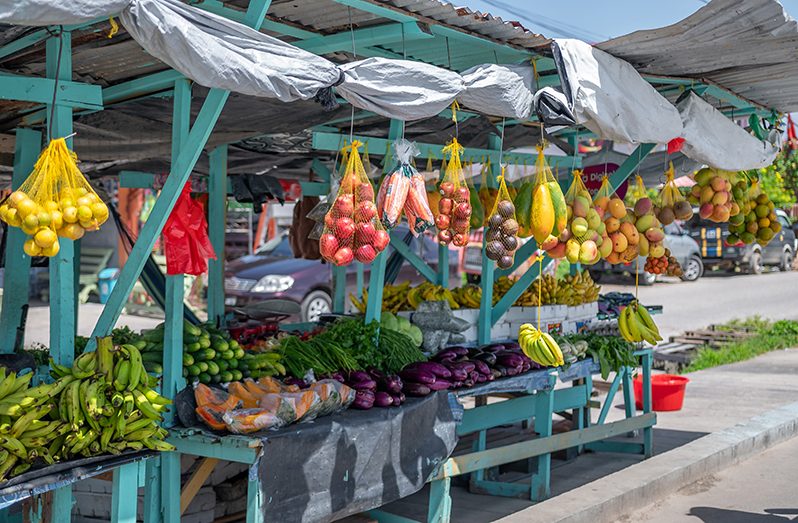PRICES for non-traditional agricultural commodities remain stable at major markets across the country.
Price checks were carried out by the New Guyana Marketing Cooperation (NGMC) at Vreed-en-Hoop, Diamond, Stabroek, Bourda, Mon Repos, and Skeldon municipal markets.
According to GMC, the minimum market price for a bundle of bora was recorded at $1,000, while other fresh vegetables such as cabbage, calaloo and carrots had an average sale price of between $120 and $600.
Prices for staple produce such as cassava, eddoes, plantains, potatoes, and yams remain unchanged or have been reduced significantly at the markets.
The corporation also confirmed that chicken, beef and mutton were readily available countrywide.
Prices for chicken and beef varied from $460-$700 per pound, while mutton and pork varied from $600-$1200. Meanwhile, a single egg was being sold for $50-$60.
Fruits, on the other hand, were priced more reasonably with bananas being sold at an average price of $222 per pound. The prices for other fruits such as lime, oranges, tangerines, among other things varied from $90-$200.
In a recent report, the New Guyana Marketing Corporation stated that consumers can look forward to seeing commodities being sold at more stable prices, as farmers are expected to experience more favourable weather conditions in the coming months, which is expected to inspire increased production.
In addition to that, the report noted that food production in Guyana will continue to attract further investments in 2023 that will improve overall productivity in the sector.
In September 2022, President, Dr. Irfaan Ali announced that Guyana and the rest of the Caribbean will benefit from a US$28 million investment from the United States (US) Government that will support increased food production and agricultural development in the Region.
Food security continues to be a paramount policy initiative for the Government of Guyana, which holds lead responsibility for agriculture, agricultural diversification, and food security in CARICOM, and is spearheading the regional body’s quest to reduce its food-import bill; this is an action that requires each state achieving a reduction in food imports of 25 per cent by 2025.



.jpg)










